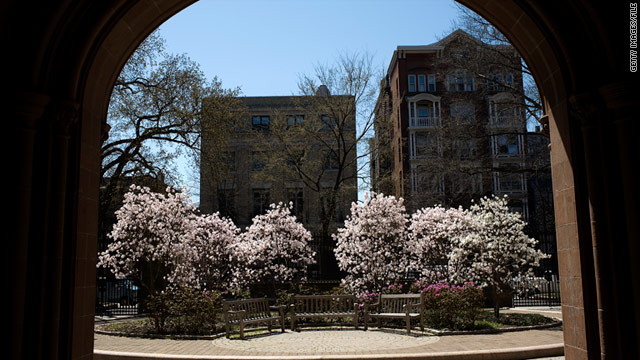Why is sexual assault on campus tolerated?
April 8, 2011 -- Updated 1743 GMT (0143 HKT)
The federal Department of Education reportedly has launched an investigation at Yale University.
STORY HIGHLIGHTS
- Toby Simon says college students are almost never expelled for sexual misconduct
- Simon says sexual assault victims often transfer, while abusers go unpunished
- She says there have been small improvements in educating students about sex assault
- Simon: It's not enough; colleges must take lead in prevention, help students identify abuse
Editor's note: Toby Simon is director of the Gertrude Meth Hochberg Women's Center at Bryant University. She is a former dean in the Office of Student Life at Brown University and was vice president for student affairs at Marymount Manhattan College in New York. She is the co-author of "Sex Without Consent: Peer Education Training for High Schools and Colleges" and "Dating: Peer Education for Reducing Sexual Harassment and Violence in Secondary Schools."
(CNN) -- Universities in the United States rarely expel students for sexual assault, according to an investigation by the federal government. And in the 42 years since it began admitting women, Yale University has not been an exception.
Because of the way universities handle sexual misconduct, it is often the victim who drops out of school. In fact, a survey I conducted of female students transferring into Brown University in the early 1990s revealed that one of the top reasons women may transfer colleges is because they've been sexually assaulted on their campus.
What's new here is that Yale received a 26-page Title IX complaint March 31, filed by 16 students and alumni, charging that its campus is a sexually hostile environment. The federal Department of Education has reportedly launched an investigation. One of the incidents the group described that was particularly offensive involved men who were pledging a fraternity; they gathered in a public spot on campus and started chanting, "No means yes, yes means anal."
The Obama administration, which had been working on sexual assault issues for some time, released a report Monday telling colleges and universities that they need to do a better job preventing and investigating sexual violence.
This isn't something they didn't know. More than 20 years ago, as an associate dean of student life at an Ivy League university, I worked with students to educate the college community about sexual violence, and was part of a national conversation with other campuses that were committed to change.
A dirty secret many of these schools guard is that they often engage in "sweetheart deals" for men who have been found responsible for a sexual assault. These men are allowed to withdraw from the campus without any notation on their transcripts of having been found guilty of a sexual misconduct violation, and are sometimes assisted by the university in their applications to other institutions. If a notation exists, it is often a vague "student conduct" violation.
I have seen improvements in two decades time. In the 1980s, female students who disclosed a sexual assault to the dean's office were sometimes told that their experiences sounded "like a little romance gone wrong." During that era, students organized to protest what they saw as a hostile environment and through their activism, some important changes to campus sexual assault policies took place.
At my university, students also developed a peer-led intervention theater piece, which addressed nonconsensual sexual encounters. Today, 21 years later, that skit lives on at hundreds of campuses.
So there has been change.
But not enough. A National Institute of Justice study in 1997 put the number of college women reporting a rape or attempted rape while at college at between 20% and 25%, but campuses remain reluctant to deal with the issue head on. (The figure for such assault on women in the general population is about one in six.) Some 25% percent of American college males admitted to sexual coercion of some form, but there's little outrage.
The questions we need to be asking are: What factors contribute to a campus climate that enables offensive and often illegal behavior perpetrated by predominantly male students? Why don't more university presidents make bold statements to incoming students and their families about their institution's policy on sexual assault and harassment?
What's needed is primary prevention, but how best to do that is up for debate. In addition to peer education, one approach that does work is "bystander education," an attempt to stop sexual violence by teaching all students -- men and women -- that they have a responsibility to step in and try to stop something they see that could lead to sexual assault. Many sexual assaults are preventable if people take the time to intervene.
Engaging campus leadership in these efforts is challenging. Simply put, sexual assault awareness campaigns are not good for university fundraising.
So we need to continue to talk about this issue in the context of civility and doing the right thing. The biggest threat to a student's safety is her peers, not strangers lurking in bushes. But it is in her peers in which she'll find her greatest hope as well.
The opinions expressed in this commentary are solely those of Toby Simon.

No comments:
Post a Comment